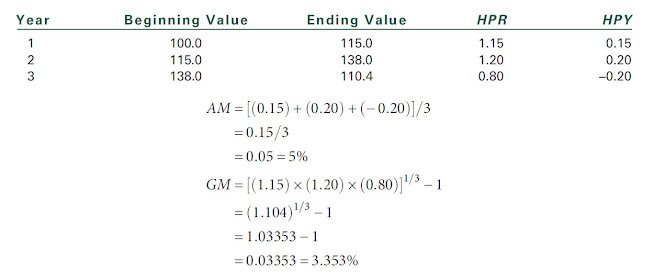Risk is the uncertainty that an investment will earn its expected rate of return. An investor who is evaluating a future investment alternative expects or anticipates a certain rate of return.
As an example, an investor may know that about 30 percent of the time the rate of return on this particular investment was 10 percent. Using this information along with future expectations regarding the economy, one can derive an estimate of what might happen in the future.
The expected return from an investment is defined as:
The investor might estimate probabilities for each of these economic scenarios based on past experience and the current outlook as follows:
The computation of the expected rate of return [E(Ri)] is as follows:
.png)
.png)
.png)
.png)
.png)















.png)
.png)

.png)
